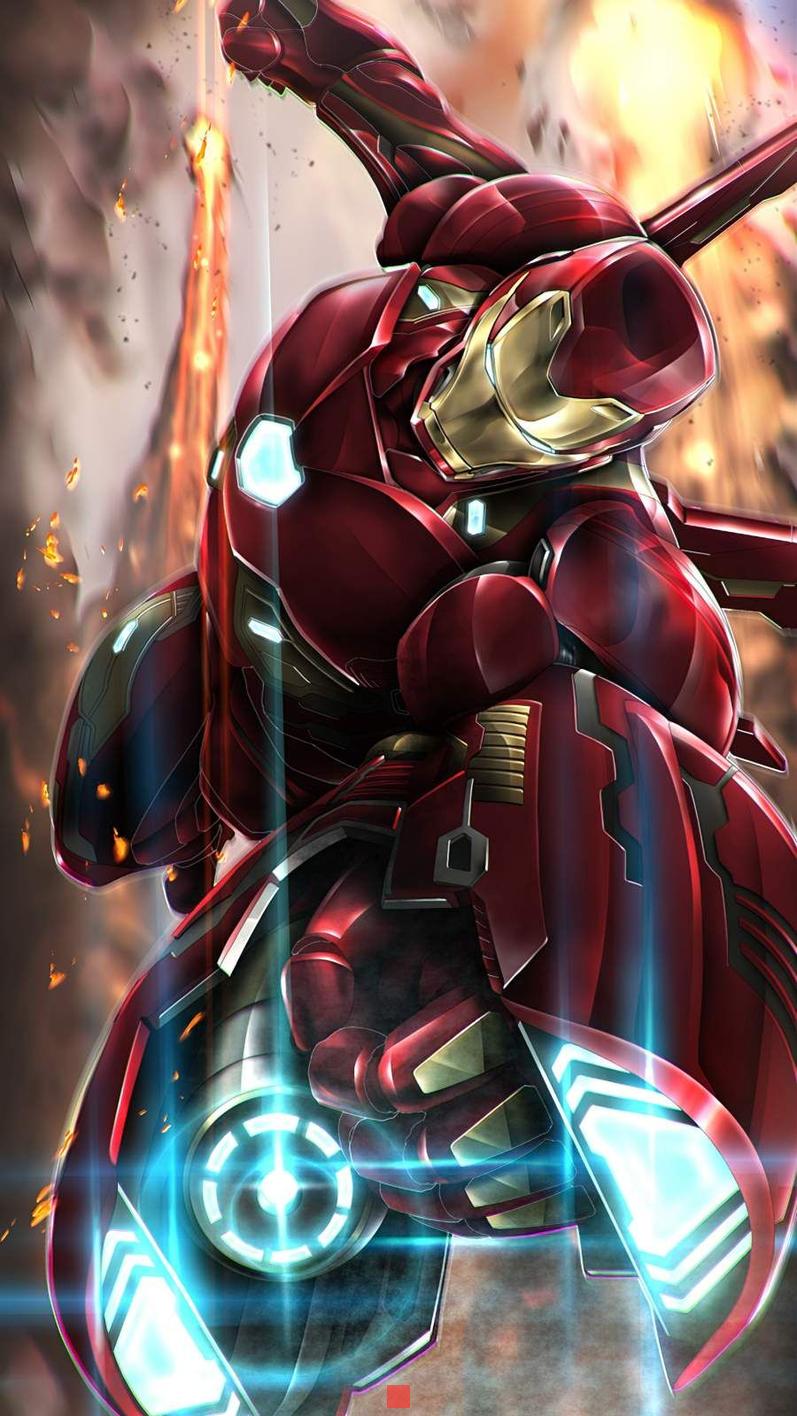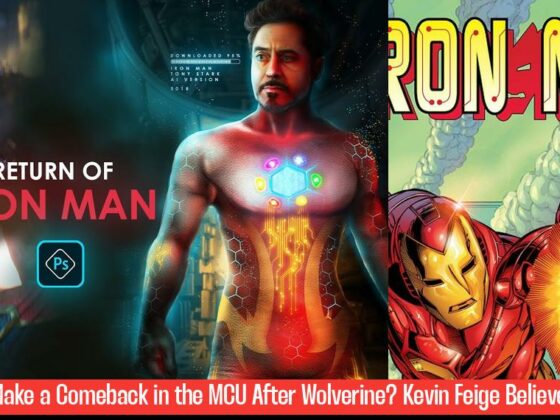Inspired by Iron Man, a Chinese Man’s Daring Attempt to Remove Metal Shards Goes Wrong

The allure of superheroes, their extraordinary abilities, and their daring feats often captivate our imaginations. But sometimes, this fascination can lead to real-life attempts that, while inspired by fictional heroes, can have disastrous consequences. This is precisely what happened to a man in China, who, inspired by the iconic Iron Man, tried to remove metal shards embedded in his thigh using a magnet.
The story of Jiang, a resident of Wuhan, Hubei province, has gone viral on Chinese social media, becoming a cautionary tale about the dangers of self-treatment and the importance of seeking professional medical help. Jiang’s attempt to emulate Iron Man’s magnetic prowess, while entertaining to some, highlights the stark difference between fiction and reality, reminding us that superhero abilities don’t translate to real-life solutions.
Jiang’s ordeal began with an industrial explosion that sent metal shards flying, some of which became lodged in his thigh. A video of his injuries, which he posted on social media, shows the gaping holes in his flesh where the shrapnel struck. Instead of seeking immediate medical attention, Jiang, inspired by the scene from the first Iron Man movie where Tony Stark removes metal shards from his chest using an electromagnet, decided to try the same method.
The scene from the movie, where Tony Stark, the billionaire inventor who transforms into Iron Man, uses an electromagnet to remove shrapnel from his chest, appears to have sparked a misguided sense of possibility in Jiang. He seemed to believe that the same method would work in his real-life situation, a testament to the powerful influence of fictional portrayals on our perceptions of reality.
However, Jiang’s attempt was doomed from the start. Even in the fictional world of Iron Man, the hero ultimately undergoes surgery to remove the shrapnel. The human body, unlike the fictionalized version, is far more complex, and the act of using magnets to remove embedded metal fragments is not only ineffective but potentially dangerous. Jiang’s ill-advised attempt only resulted in more pain, forcing him to finally seek emergency treatment at Wuhan Puren Hospital.
A Lesson in Reality
A team of skilled surgeons at Wuhan Puren Hospital performed microsurgery to remove four metal fragments from Jiang’s thigh, repairing the damaged muscles, ligaments, and nerves. Dr. Peng Hanshu, one of the surgeons involved in the procedure, warned people against repeating Jiang’s mistake, emphasizing the importance of seeking professional medical help in such situations.
“In such accidents, do not blindly try to handle it yourself. It is recommended to immediately seek medical attention at a proper healthcare facility,” Dr. Peng Hanshu said, highlighting the potential dangers of self-treatment and the critical role of qualified medical professionals in treating injuries. Jiang’s experience serves as a stark reminder that fictional solutions don’t translate to real-life scenarios, especially when dealing with potentially life-threatening injuries.
Although Jiang’s attempt to emulate Iron Man’s magnetic prowess may seem comical in retrospect, it underscores the power of media, especially fictional narratives, in shaping our perceptions and influencing our actions. While fictional superheroes provide entertainment and inspiration, it’s crucial to remember that they are fictional creations, and their abilities don’t translate to the real world. When faced with real-life challenges, particularly those involving physical injuries, it’s essential to seek professional help, relying on the expertise of trained medical personnel rather than trying to replicate fictional solutions.
Discover: One Piece: Egghead Arc English Dub Release Date Revealed – Are You Ready for the Thrills?
The Power of Social Media

The story of Jiang’s Iron Man-inspired attempt to remove metal shards spread like wildfire on Chinese social media, becoming a source of amusement and a topic of discussion among users. While some found humor in Jiang’s misguided attempt, others expressed concern, highlighting the potential dangers of self-treatment and emphasizing the importance of seeking medical attention.
“If this method worked, hospitals would be out of business,” one user commented, highlighting the absurdity of Jiang’s attempt and the reliance on skilled medical professionals for treating complex injuries. Another user commented, “The human body is not like cardboard or wood. The flesh closes and heals itself. It’s not going to stay open for you to use a magnet. Watching too many TV shows can confuse reality,” providing a realistic perspective on the complexities of the human body and the dangers of allowing fictional narratives to influence real-world decisions.
Social media platforms, while serving as valuable channels for information and entertainment, can also contribute to the spread of misinformation and the normalization of dangerous behaviors. Jiang’s story illustrates the potential for social media to amplify both positive and negative trends, underscoring the importance of critical thinking, media literacy, and responsible use of online platforms. It serves as a reminder that while social media can be a powerful tool for communication and entertainment, it’s essential to approach information with skepticism, especially when dealing with health-related matters.
A Reminder of Reality
Jiang’s story, while seemingly humorous, serves as a stark reminder of the dangers of self-treatment, the importance of seeking professional medical help, and the need to distinguish between fiction and reality. While it’s tempting to be inspired by fictional heroes and their extraordinary abilities, it’s crucial to remember that those abilities are purely fictional and do not translate to the real world.
When faced with real-life challenges, especially those involving physical injuries, it’s essential to prioritize professional medical care, relying on the expertise of trained medical professionals rather than attempting to replicate fictional solutions. The human body is a complex system, and its treatment requires specialized knowledge and skills that cannot be acquired through watching movies or reading fictional stories.
Jiang’s experience highlights the importance of promoting critical thinking and media literacy, encouraging individuals to approach information, especially health-related information, with a healthy dose of skepticism. It’s a reminder that while fictional narratives can be entertaining and inspiring, they should not replace real-world knowledge and expertise.
What inspired the Chinese man to try and remove metal shards from his leg using a magnet?
The Chinese man was inspired by the iconic Iron Man, a fictional superhero known for using magnets to remove metal shards from his body in the movies.
What happened to the Chinese man after attempting to remove the metal shards with a magnet?
His attempt went wrong, causing more pain and leading him to seek emergency medical treatment.
Why is Jiang’s story considered a cautionary tale?
Jiang’s story serves as a cautionary tale about the dangers of self-treatment and the importance of seeking professional medical help instead of trying to emulate fictional characters.
Read : Tina Knowles Proudly Celebrates Granddaughter Blue Ivy’s BET Award Win
What lesson does Jiang’s experience teach us about the influence of fictional portrayals on reality?
Jiang’s experience highlights the stark difference between fiction and reality, emphasizing that superhero abilities depicted in movies do not always translate to safe or effective real-life solutions.



